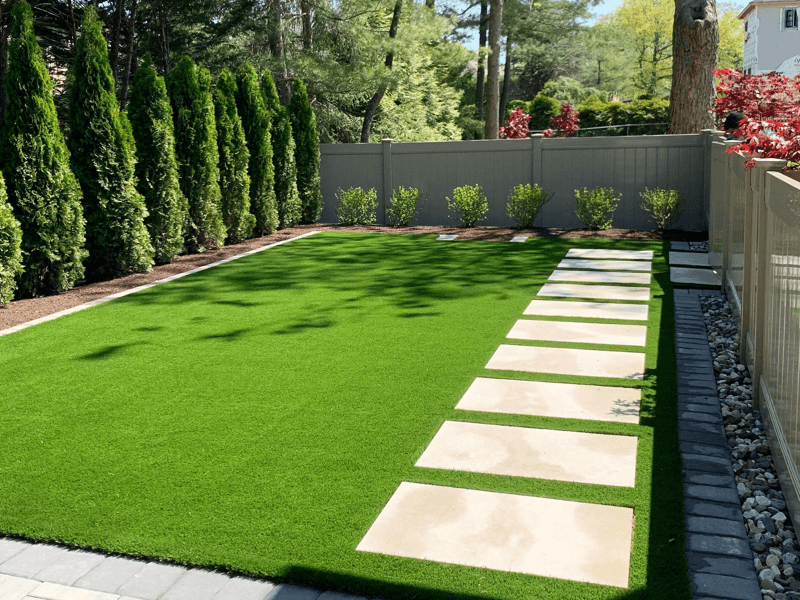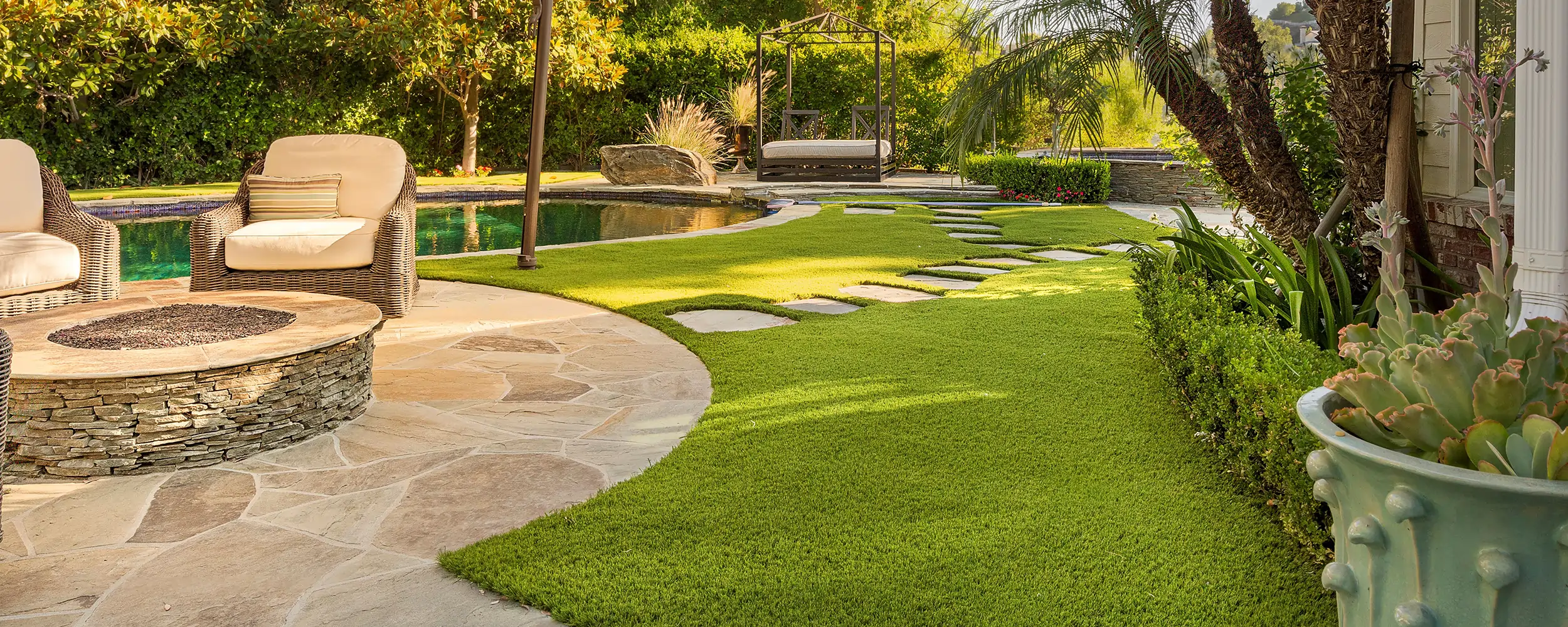Best Phoenix Turf Companies Specializing in Synthetic Grass Solutions
Best Phoenix Turf Companies Specializing in Synthetic Grass Solutions
Blog Article
Delve Into the Environmental Benefits of Opting for Artificial Turf Solutions
The adoption of man-made turf options offers an engaging chance to address pressing environmental difficulties. By dramatically reducing water usage and minimizing the application of hazardous chemicals, these choices not just promote sustainable landscape design but also shield regional communities.
Water Preservation Conveniences
Among the most considerable advantages of synthetic grass is its capacity to save water. Traditional grass yards require substantial irrigation, especially in locations susceptible to dry spell or water constraints. In contrast, synthetic grass does not need watering, considerably minimizing the total need for water resources. This attribute is especially beneficial in deserts where water scarcity is a pressing worry.
By removing the demand for normal watering, synthetic grass contributes to lasting landscape techniques and helps reduce the ecological influence of extreme water intake. The conservation of water expands to the decrease of drainage, which can lead to soil erosion and river contamination.
Furthermore, the setup of artificial turf permits communities and property owners to assign water sources much more effectively, focusing on vital uses such as alcohol consumption water and agriculture. The change towards synthetic grass not only promotes accountable water use however additionally aligns with more comprehensive environmental goals targeted at preserving natural deposits.
As communities increasingly focus on sustainability, the water conservation advantages of synthetic turf present a compelling situation for its fostering in residential and business landscape design projects.
Reduced Chemical Use
The transition to synthetic turf dramatically decreases the dependence on chemical therapies frequently used in all-natural lawn maintenance. Traditional grass administration generally entails the application of herbicides, pesticides, and fertilizers to promote development and control bugs. These chemicals can pose threats to human health and wellness, neighborhood wild animals, and the environment, contributing to dirt and water contamination.
In comparison, artificial turf eliminates the need for these unsafe substances. By lessening the release of synthetic compounds into the ecosystem, synthetic turf advertises much healthier dirt and water systems.
Furthermore, the absence of chemical runoff connected with man-made turf installations assists shield local waterways from pollution, supporting aquatic life and preserving biodiversity. Phoenix turf companies. As communities significantly focus on sustainable methods, deciding for synthetic grass provides a sensible solution that aligns with ecological conservation objectives. Via this change, home owners can delight in lush green rooms without jeopardizing environmental health, leading the way for a much more lasting future
Reduced Carbon Impact

Furthermore, the setup of synthetic grass can result in substantial water conservation. All-natural lawns require substantial quantities of water for irrigation, which not only contributes to the carbon impact connected with water removal and treatment yet likewise pressures regional water sources. On the other hand, synthetic grass requires minimal upkeep, requiring no watering, thereby dramatically minimizing water use and its linked power costs.
In addition, the long life of synthetic grass adds to its decreased carbon impact. With a lifespan of as much as 15 years or even more, the need for frequent substitutes is diminished, causing much less waste and reduced power intake in manufacturing and taking care of typical grass options. Generally, man-made grass offers a sustainable option for ecologically conscious landscape design.
Habitat Preservation
Habitat conservation is an important factor to consider in the argument over landscaping options, especially when contrasting synthetic grass to natural yard. Natural lawn lawns frequently require substantial upkeep, including using fertilizers, herbicides, and chemicals, which can adversely influence neighborhood ecological communities. These chemicals can leach into the soil and rivers, harming native plants and fauna and disrupting regional environments.
On the other hand, synthetic grass offers a possibility to decrease the eco-friendly impact of landscaping. By choosing artificial grass, homeowners can reduce the disturbance of natural environments associated with traditional grass treatment practices. Synthetic grass gets rid of the need for dangerous chemicals, consequently shielding neighboring wild animals and keeping the honesty of surrounding environments. The installation of synthetic turf can lead to the conversion of former yard areas right into even more biodiverse landscapes, such as pollinator gardens or indigenous plant areas, which can her response sustain regional wild animals.
Inevitably, the transition to synthetic grass not only conserves water and minimizes upkeep initiatives however additionally cultivates an extra harmonious relationship in between human activities and the all-natural environment, promoting environment preservation while doing so.
Long-Term Sustainability
Long-term sustainability is an important variable in examining the webpage advantages of artificial turf over conventional turf yards. One of the most significant benefits of synthetic grass is its toughness; it can last approximately 15-20 years with very little maintenance, whereas natural yard needs regular reseeding and replacement. This long life lowers the need for consistent resources, such as water, plant foods, and pesticides, which are crucial for maintaining a healthy and balanced grass lawn.
Additionally, synthetic grass adds to a reduction in carbon exhausts connected with lawn care tools. Traditional lawns frequently need gas-powered lawn mowers, trimmers, and blowers, all of which add to air pollution. Phoenix turf companies. On the other hand, fabricated turf removes the need for such tools, advertising a cleaner atmosphere
In addition, the production of synthetic grass progressively makes use of recycled materials, improving its sustainability account. As suppliers adopt green techniques, the ecological footprint of synthetic grass continues to lessen.

Verdict
The adoption of synthetic grass solutions offers significant environmental advantages, including substantial water preservation, minimized reliance on dangerous chemicals, and a lower carbon impact. Artificial lawn aids in preserving all-natural habitats by reducing land disruption and advertising lasting sustainability through the use of resilient materials. Collectively, these aspects highlight the potential of synthetic turf to add positively to ecological health and wellness and supply a viable choice to standard landscaping practices in a progressively resource-conscious globe.
In contrast, man-made turf does not need click now watering, considerably minimizing the overall demand for water resources. By decreasing the launch of artificial substances into the community, artificial lawn advertises much healthier dirt and water systems.
Moreover, the installation of synthetic grass can result in substantial water conservation. In comparison, man-made grass requires very little upkeep, calling for no watering, thereby dramatically lowering water use and its connected energy costs.

Report this page